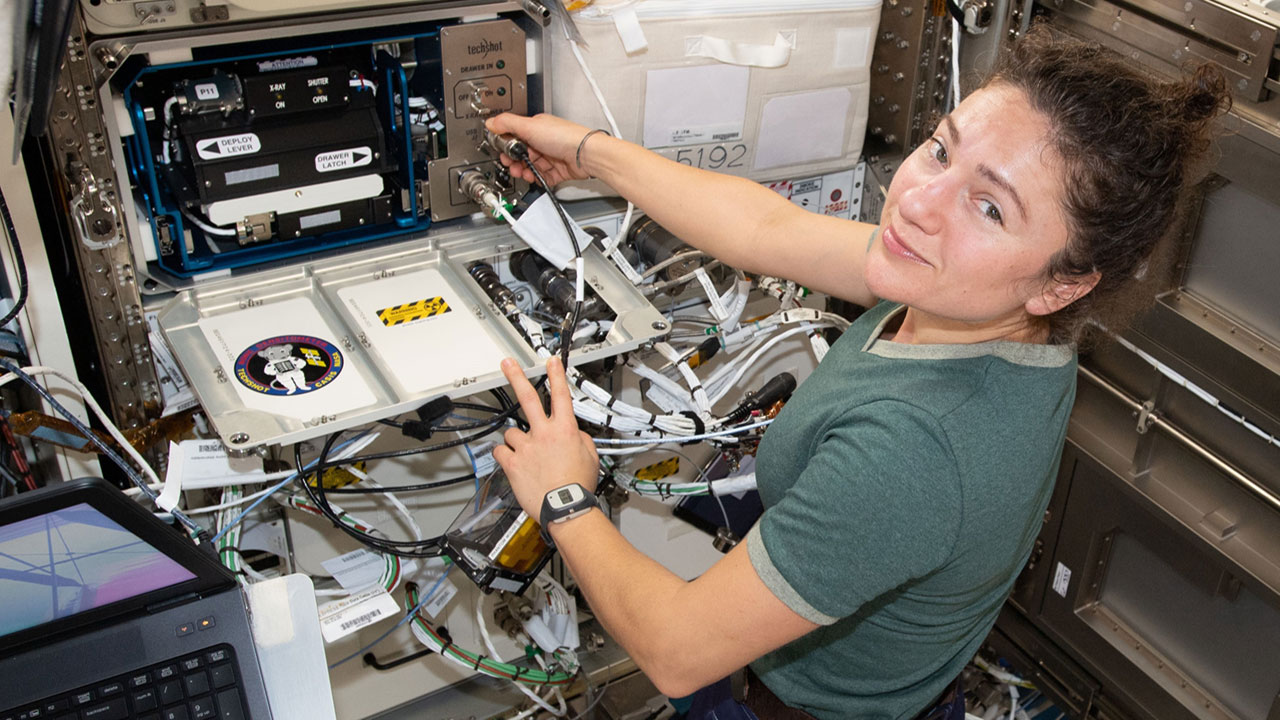2020 ISSRDC Award: Mighty Mice in Space

NASA astronaut Jessica Meir works with the Techshot Bone Densitometer to assess bone density of the animal subjects for the Mighty Mice investigation.
Media Credit: NASA
October 21, 2021
Each year, the International Space Station Research and Development Conference (ISSRDC(Abbreviation: ISSRDC) The only conference dedicated exclusively to showcasing how the International Space Station is advancing science and technology and enabling a robust and sustainable market in LEO. This annual conference brings together leaders from the commercial sector, U.S. government agencies, and academic communities to foster innovation and discovery onboard the space station. ISSRDC is hosted by the Center for the Advancement of Science in Space, manager of the ISS National Lab; NASA; and the American Astronautical Society.) hosted by the Center for the Advancement of Science in Space (CASIS(Abbreviation: CASIS™) The nonprofit organization that manages the ISS National Lab, which receives at least 50 percent of the U.S. research allocation on the International Space Station to facilitate research that benefits humanity (NASA manages the other 50% and focuses on research for space exploration purposes).), NASANational Aeronautics and Space Administration, and the American Astronautical Society, awards individuals who have pushed the boundaries of space-based research.
Se-Jin Lee, presidential distinguished professor of genetics and genome science at the University of Connecticut School of Medicine and the Jackson Laboratory of Genomic Medicine, was awarded a 2020 ISSRDC award for compelling results in biology and medicine. Due to the pandemic last year, all ISSRDC 2020 awards were presented during ISSRDC 2021.
The brawny, genetically engineered rodents known as “mighty mice”—and their creator, Se-Jin Lee of the University of Connecticut and the Jackson Laboratory—are still charting new frontiers in muscle research.
In an experiment sponsored by the International Space Station (ISSInternational Space Station) U.S. National Laboratory, Lee built on his prior studies into the biochemical pathways regulating muscle development that led to his creation of “mighty mice.” This breed of hypermuscular mouse is genetically engineered to lack the muscle growth-inhibiting protein, myostatin. By sending his robust rodents into space, Lee showed the potential of interfering with myostatin and activin A, another muscle-related protein, for reducing the loss of skeletal muscle and bone that can result from extended spaceflight.
After 33 days onboard the ISS, the myostatin-less mice retained almost all of their muscle and bone mass compared with control samples of unaltered, “wild-type” mice, which saw significant losses. Additionally, wild-type mice injected with a soluble myostatin/activin A inhibitor during or after flight actually saw increased muscle mass and bone density, suggesting the inhibitor’s potential as a treatment for tissue loss.
The experiment suggests a means to not only counter the physiological impacts of long-term spaceflight in astronauts but also treat patients on Earth with degenerative muscle or bone diseases and wasting conditions associated with ailments like cancer and AIDS. Lee’s results were published in the high-impact journal PNAS (Proceedings of the National Academy of Science).